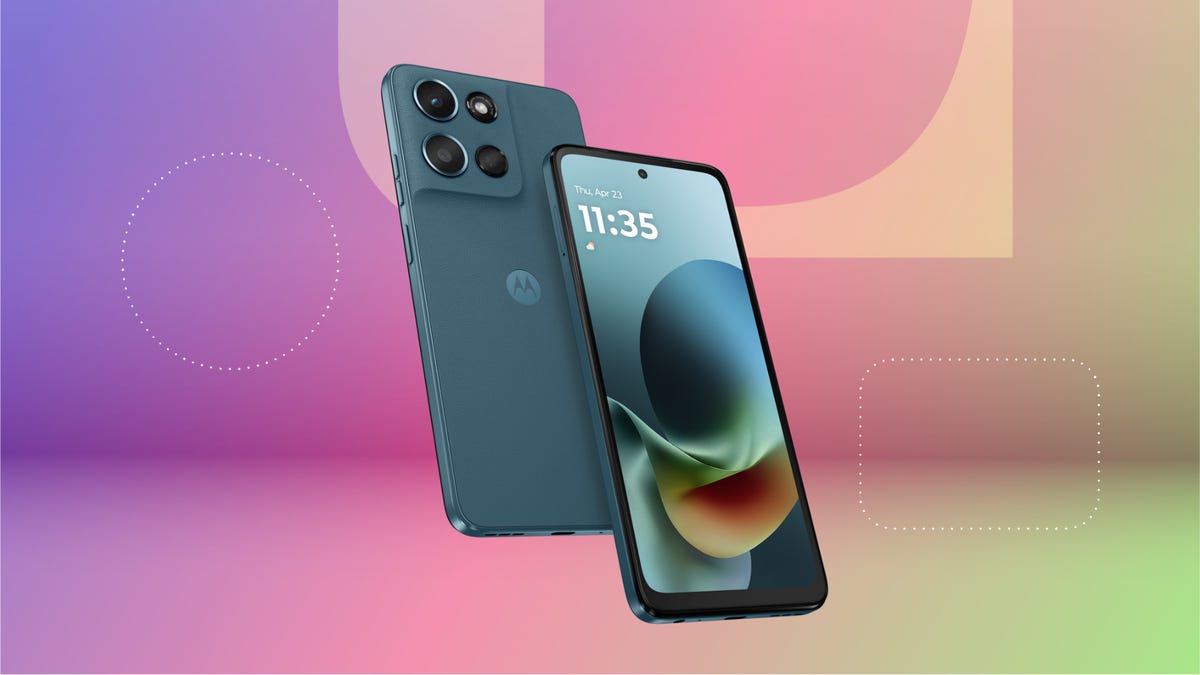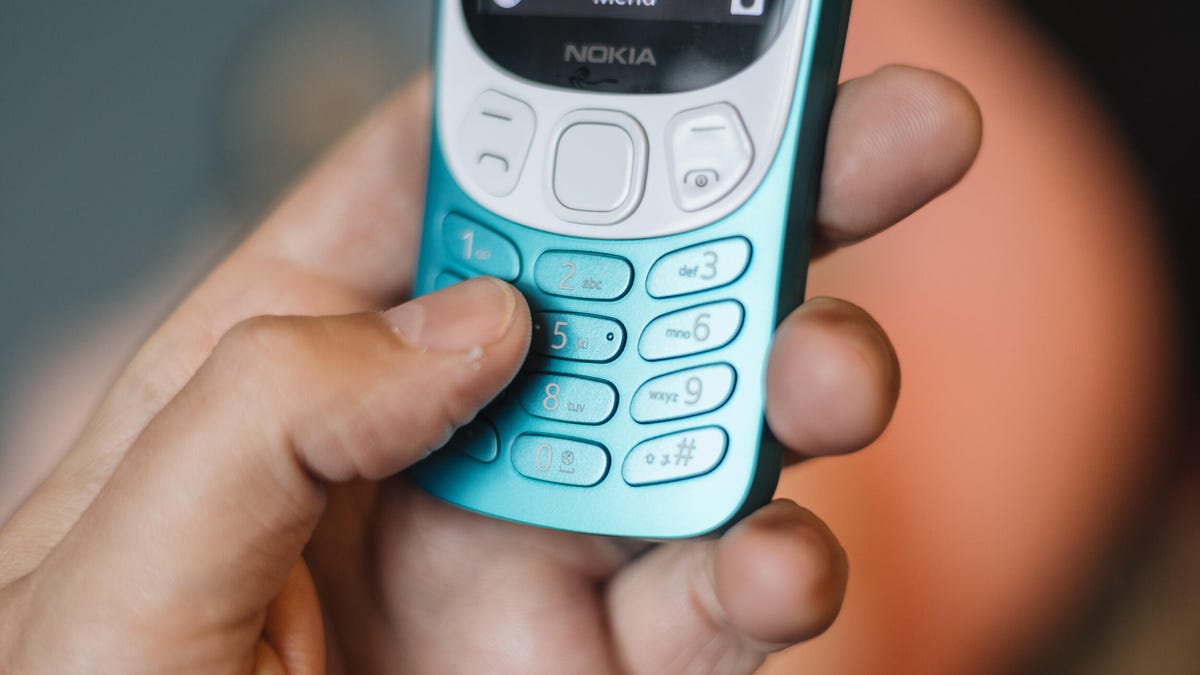Technologies
Crisis Core Reunion Is a Gorgeous Final Fantasy 7 Classic Remastered
Review: Zack Fair’s beautifully 2007 spinoff adventure has mostly gotten better with age.

Final Fantasy 7 fans got ready to eat well in the mid-noughties, as developer Square Enix released a bunch of spinoffs expanding the universe of the legendary 1997 PlayStation RPG. Unfortunately, most of the new stories — like PS2 shooter Dirge of Cerberus and CGI movie Advent Children — turned to be fast food next to the delicious and nutritious meal that was Final Fantasy 7.
The sole exception was the excellent 2007 action-RPG Crisis Core. This prequel cast you in the role of Zack Fair, a character with a small-but-crucial role in Final Fantasy 7’s main story, and explored his career as a member of megacorporation Shinra’s Soldier paramilitary group.
It offered roughly 25 hours of main story gameplay, a solid chunk of side missions and an inevitable emotional gut-punch of an ending that seared itself into fans’ brains.
The problem: It was only on PlayStation Portable (the PSP) and remained marooned on Sony’s now-obsolete handheld for more than 15 years. However, after the 2020 Final Fantasy 7 Remake and its downloadable content hinted at Zack’s playing a bigger part in the upcoming Rebirth, Square Enix is finally letting a new generation of gamers dive into Crisis Core.
Crisis Core: Final Fantasy 7 Reunion hits PS4, PS5, Xbox One, Xbox Series X|S, Nintendo Switch and PC on Dec. 13. I played a chunk of the game on PS5 over the weekend, and found this remastered classic to be a nostalgic joy.
Initially, I thought this was just the PSP game with some modern flourishes — 3D character models, upgraded environments and the ability to finally play it on a massive TV screen (or mirror the handheld original on Switch). Some of the prerendered cutscenes aren’t as well remastered, with graphical artifacts occasionally marring the image.
As I played, it became increasingly clear that Square Enix had made more subtle changes as well; developers have brought the combat closer to the Remake’s beautiful flow. Chaining physical, magical attacks and summoning god-like beings who perform super attacks feels natural and smooth — partially because all the modern systems’ controllers have more buttons to use than the PSP — making for a far more pleasant experience than it was in 2007.
You also have a new way to interrupt your most powerful enemies’ biggest attacks, by doing as much damage as possible when they’re charging up. It might not seem like a major addition, but it adds a layer of strategy to boss encounters you might otherwise have played defensively.
The slot machine-style Digital Mind Wave system that periodically gives you bonuses or summons an ally in combat remains inscrutable as ever — it also determines when Zack and his abilities level up. Rest assured that this isn’t random, so it seems that way you just can’t see how much experience points you have. Its link to Zack’s emotional effect also used to great narrative effect at a few key points.
All the cutscenes are fully voice acted now — chunks of the original were text-only — with the Remake’s excellent cast back in their roles. That includes Superman & Lois’ Tyler Hoechlin as future villain Sephiroth, who’s a pretty chill (if a bit aloof) dude for much of this game.
However, for good or ill, Crisis Core Reunion is fundamentally the same game we got in 2007. It’s still divided into easily digestible story chapters where Zack goes out on assignments for Shinra, unlocking bite-size missions along the way — it can’t quite shake off its roots as a portable game designed for quick sessions.
It feels a little stop-start in the early hours, especially as the game’s various systems are introduced to you, but you’ll soon get into the groove.
The gameplay loop of doing a chapter, then blasting through a bunch of unlocked missions and talking to the various characters in the hub around Shinra headquarters is satisfying — similar to Mass Effect, another classic 2007 RPG. It’s basically a few rooms and streets, greatly enhanced by the game’s magnificent art direction (without the slow loading of the PSP version).
Zack is also an ultra-charismatic protagonist, and his enthusiasm is a breath of fresh air compared to Final Fantasy 7’s moody Cloud. Fans who know about the relationship between these two will find getting to know Zack particularly rewarding.
The other characters are a mixed bag — Zack’s Soldier mentor Angeal is so stiff that I practically drift off whenever he’s on screen, and main villain Genesis is a dorky Sephiroth wannabe. The voice actors do their best, but the writing around these two just isn’t compelling. However, Cloud and Aerith make up for it when they enter the story.
And seeing the early adventures of these gaming icons, and how Zack helped to shape them, is the best reason to play Crisis Core Reunion. It’s still a 2007 PSP game at heart (as evidenced by the beautiful mid-noughties flip phones), but Square Enix’s ambition made it one of the best games on that system. I’m so glad it’s not trapped there any more. It’s a game every Final Fantasy 7 fan needs to play before Rebirth arrives late next year.
Technologies
Motorola’s New Moto G and Moto G Play Pack a Key Gemini Feature at a Lower Price
Both the new $170 Moto G Play and $200 Moto G will get Google’s Circle to Search.

Motorola’s new low-cost Android phones will be among the cheapest to get Google’s Circle to Search. The new $200 Moto G and $170 Moto G Play for 2026, announced Tuesday, will ship with Android 16 and come with access to the Gemini-powered feature along with the Gemini assistant.
Google’s Circle to Search has been a particularly useful AI-powered feature since its debut, making it particularly noteworthy that it will now be available in devices that cost under $200. The $170 Moto G Play will arrive first on Nov. 13, followed by the $200 Moto G on Dec. 11.
Both phones will come with a 6.7-inch display and a 120Hz refresh rate, include 5G connectivity (which is a first for the Play series) and get a 5,200mAh battery.
The lower-cost Play phone will run on a Mediatek Dimensity 6300 processor and include 4GB of memory that can be virtually expanded to 12GB with the RAM Boost feature. That perk essentially borrows from the phone’s 64GB of onboard storage which can be expanded to 1TB with a microSD card slot, while its battery can be recharged at an 18-watt speed. It will also have a 32-megapixel main camera on the back, and an 8-megapixel selfie camera. It will come in one color called Pantone Tapestry, which has a blue-green shade.
The slightly pricier Moto G will also run on the same processor, but step up with 128GB of storage and a 30-watt wired charging speed. Its rear camera system leads with a 50-megapixel wide angle camera paired with a 2-megapixel macro camera, while its selfie shooter is a 32-megapixel camera. It will come in two colors, the Pantone Cattleya Orchid (a magenta-like shade) and Pantone Slipstream (a gray shade).
While I am glad to see lower-cost phones get Circle to Search, I am somewhat concerned that many of the specs in the 2026 edition of the Moto G are similar to the 2025 model — particularly the inclusion of 4GB of onboard RAM. I found the prior Moto G to have stability issues initially, which were largely resolved by using the RAM Boost setting to make the software simulate additional memory to assist with loading apps and multitasking. We’ll have to test to see if the new 2026 Moto G phones will optimize better under Android 16, and hopefully the bigger batteries will also allow these less-powerful phones to go even longer between charges.
Technologies
Today’s Wordle Hints, Answer and Help for Nov. 4, #1599
Here are hints and the answer for today’s Wordle for Nov. 4, No. 1,599.

Looking for the most recent Wordle answer? Click here for today’s Wordle hints, as well as our daily answers and hints for The New York Times Mini Crossword, Connections, Connections: Sports Edition and Strands puzzles.
Today’s Wordle puzzle begins with one of the least-used letters in the alphabet. (Check our full list ranking the letters by popularity.) If you need a new starter word, check out our list of which letters show up the most in English words. If you need hints and the answer, read on.
Today’s Wordle hints
Before we show you today’s Wordle answer, we’ll give you some hints. If you don’t want a spoiler, look away now.
Wordle hint No. 1: Repeats
Today’s Wordle answer has one repeated letter.
Wordle hint No. 2: Vowels
Today’s Wordle answer has two vowels, but one is the repeated letter, so you’ll see that one twice.
Wordle hint No. 3: First letter
Today’s Wordle answer begins with V.
Wordle hint No. 4: Last letter
Today’s Wordle answer ends with E.
Wordle hint No. 5: Meaning
Today’s Wordle answer can refer to the place where something happens, especially an organized event such as a concert, conference, or sports event.
TODAY’S WORDLE ANSWER
Today’s Wordle answer is VENUE.
Yesterday’s Wordle answer
Yesterday’s Wordle answer, Nov. 3, No. 1598 was AWOKE.
Recent Wordle answers
Oct. 30, No. 1594: LATHE
Oct. 31, No. 1595: ABHOR
Nov. 1, No. 1596: MOTEL
Nov. 2, No. 1597: RABID
Technologies
Why You Should Consider a Burner Phone for Your Holiday Travel This Year
If you’re traveling internationally, carrying a simple phone that doesn’t store personal information can be a smart move when entering the US.

Travel is challenging enough, and this year adds a new hurdle. US border agents are stepping up searches of travelers entering the country — even US citizens returning from overseas — and that extends to their personal devices. These searches can go beyond a quick look, giving agents the authority to copy or analyze a phone’s contents.
According to new figures from US Customs and Border Protection, nearly 15,000 device searches were carried out between April and June, with over 1,000 of them using advanced tools that copy or analyze what’s on a phone. The rising numbers raise questions about how much personal data travelers may be handing over without realizing it.
So what’s the solution? A burner phone. It’s the ultimate defense for keeping your personal data private when you travel, ensuring you stay connected without handing over your entire digital life at the border.
But the appeal goes beyond privacy. A stripped-down phone is also the perfect escape from the constant notifications and screen-time vortex of your primary device. Even celebrities such as Conan O’Brien have embraced simpler phones to cut through the noise. Whether you’re crossing a border or just trying to cross the street without distractions, a burner might be the smartest tech you own.
Read more: Best Prepaid Phone of 2025
Although carriers have offered prepaid phones since the ’90s, «burner phones» or «burners» became popular in the 2000s following the celebrated HBO series The Wire, where they helped characters avoid getting caught by the police. Although often portrayed in that light, burners aren’t only used by criminals; they’re also used anyone concerned with surveillance or privacy infringement.
What is a burner phone, and how does it work? Here’s everything you need to know about burners and how to get one.
Don’t miss any of our unbiased tech content and lab-based reviews. Add CNET as a preferred Google source.
What is a burner phone?
A burner phone is a cheap prepaid phone with no commitments. It comes with a set number of prepaid call minutes, text messages or data, and it’s designed to be disposed of after use.
Burners are contract-free, and you can grab them off the counter. They’re called burner phones because you can «burn» them (trash them) after use, and the phone can’t be traced back to you, which makes them appealing to criminals. Burner phones are typically used when you need a phone quickly, without intentions of long-term use.
Burners are different from getting a regular, contract-bound cellphone plan that requires your information to be on file.
Why should you use a burner phone?
Burner phones are an easy way to avoid cellphone contracts or spam that you get on your primary phone number. Burners aren’t linked to your identity, so you can avoid being tracked down or contacted.
You don’t have to dispose of a burner phone after use. You can add more minutes and continue using it. Burner phones can still function as regular phones, minus the hassle of a contract.
You can also get a burner phone as a secondary phone for a specific purpose, like having a spare phone number for two-factor authentication texts, for business, or to avoid roaming charges while traveling. Burner phones are often used by anyone concerned with privacy.
Read more: The Data Privacy Tips Digital Security Experts Wish You Knew
Burner phones, prepaid phones, smartphones and burner SIMs: What’s the difference?
Burner phones are cheap phones with simple designs that lack the bells and whistles of a smartphone. Because they’re designed to be disposable, you only get the essentials, as seen by the most common version, the flip phone.
All burner phones are prepaid phones, but not all prepaid phones are burners. What sets a burner apart is that you won’t have to give away any personal information to get one, and it won’t be traceable back to you. Again, a burner phone is cheap enough to be destroyed after use.
Prepaid smartphones are generally low-end models. You can use any unlocked smartphone with prepaid SIM cards, essentially making it a prepaid phone.
If you want a burner, you don’t necessarily have to buy a new phone. You can get a burner SIM and use it with an existing phone. Burner SIMs are prepaid SIMs you can get without a contract or giving away personal information.
Where can you buy a burner phone?
Burner phones are available at all major retail outlets, including Best Buy, Target and Walmart. They’re also often available at convenience stores like 7-Eleven, local supermarkets, gas stations and retail phone outlets like Cricket and Metro.
You can get a burner phone with cash, and it should cost between $10 and $50, although it may cost more if you get more minutes and data. If you’re getting a burner phone specifically to avoid having the phone traced back to you, it makes sense to pay with cash instead of a credit card.
If you just want a prepaid secondary phone, you can use a credit card. Just keep in mind that credit cards leave a trail that leads back to you.
There are also many apps that let you get secondary phone numbers, including Google Fi and the Burner app. However, these aren’t burners necessarily because the providers typically have at least some of your personal information.
If you’re just looking to get a solid prepaid phone without anonymity, check out our full guide for the best prepaid phone plans available. We also have a guide for the best cheap phone plans.
-

 Technologies3 года ago
Technologies3 года agoTech Companies Need to Be Held Accountable for Security, Experts Say
-

 Technologies3 года ago
Technologies3 года agoBest Handheld Game Console in 2023
-

 Technologies3 года ago
Technologies3 года agoTighten Up Your VR Game With the Best Head Straps for Quest 2
-

 Technologies4 года ago
Technologies4 года agoVerum, Wickr and Threema: next generation secured messengers
-

 Technologies4 года ago
Technologies4 года agoBlack Friday 2021: The best deals on TVs, headphones, kitchenware, and more
-

 Technologies4 года ago
Technologies4 года agoGoogle to require vaccinations as Silicon Valley rethinks return-to-office policies
-

 Technologies4 года ago
Technologies4 года agoOlivia Harlan Dekker for Verum Messenger
-

 Technologies4 года ago
Technologies4 года agoiPhone 13 event: How to watch Apple’s big announcement tomorrow
